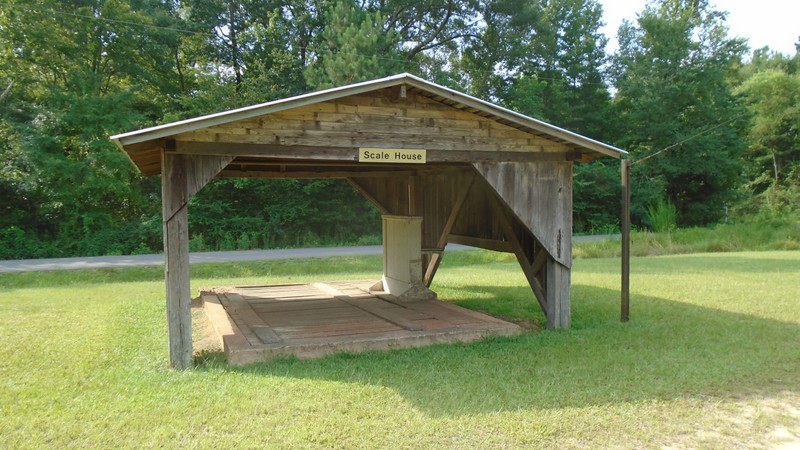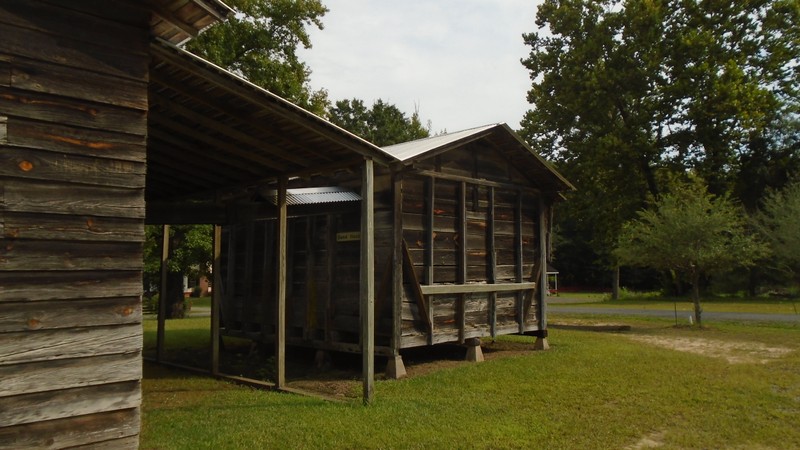Scale House and Seed House
Introduction
Text-to-speech Audio
The Goodlett Cotton Gin has two outbuildings: the Scale House and the Seed House. The Scale House is where producers would have their crops weighed before starting the ginning/milling processes. The Seed House, off to the side and connected by a conveyor, is where separated cotton seeds were stored.
Images
Scale House

Seed House

Backstory and Context
Text-to-speech Audio
The Scale House, located in front of the main building, also played an important part in the ginning process. Farmers drove their cotton-laden wagons onto the scale house platform to be weighed. After being unloaded, the wagon was weighed again to determine the cotton’s true weight. When working properly, the scales are accurate to within less than 5 pounds.
The Seed House, located to the side and connected by a seed conveyor, was used to store seed extracted from the cotton fiber. From there, the seed was transported to a mill for conversion to vegetable oil or livestock meal.
Sources
Brooke, Steven. Historic Washington, Arkansas. Gretna, Louisiana. Pelican Publishing Company, 2000.
Medearis, Mary. Washington, Arkansas : History on the Southwest Trail. Hope, Arkansas. Copies + Office Solutions, 1984.
Williams, Charlean Moss. The Old Town Speaks : Washington, Hempstead County, Arkansas, gateway to Texas, 1835, Confederate Capital, 1863. Houston, Texas. The Anson Jones Press, 1951.
Williams, Joshua. Washington. Images of America. Charleston, South Carolina. Arcadia Publishing, 2014.
Historic Washington State Park Collection
Historic Washington State Park Collection
